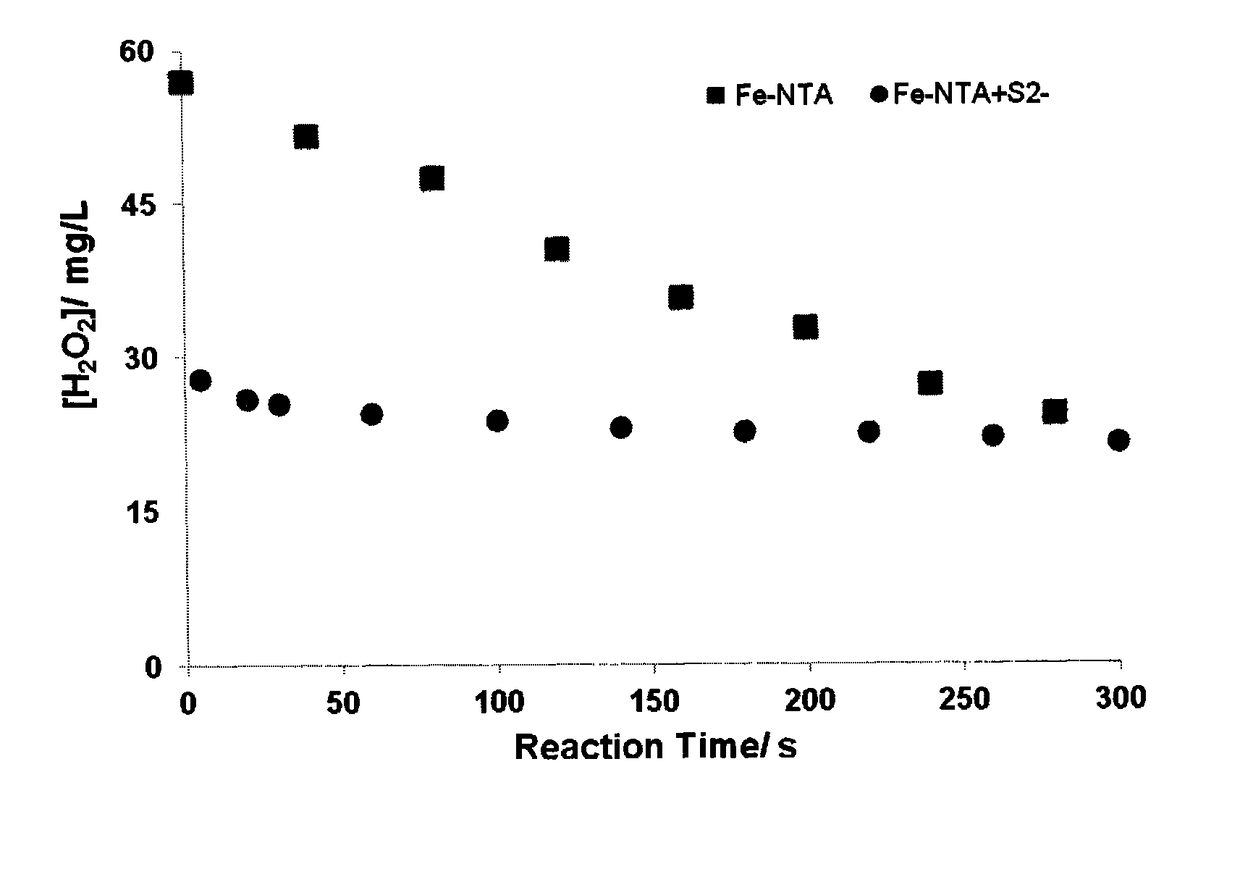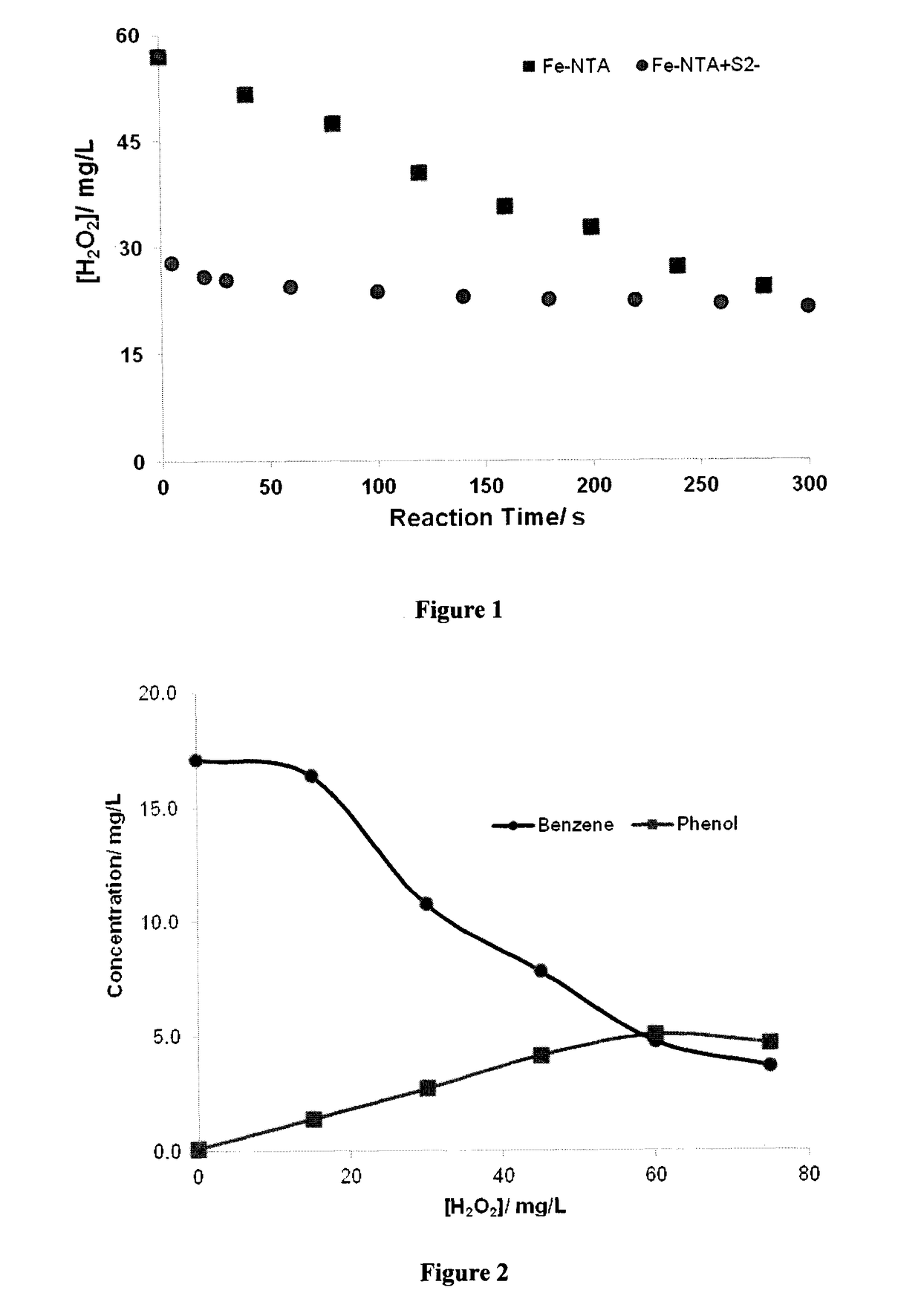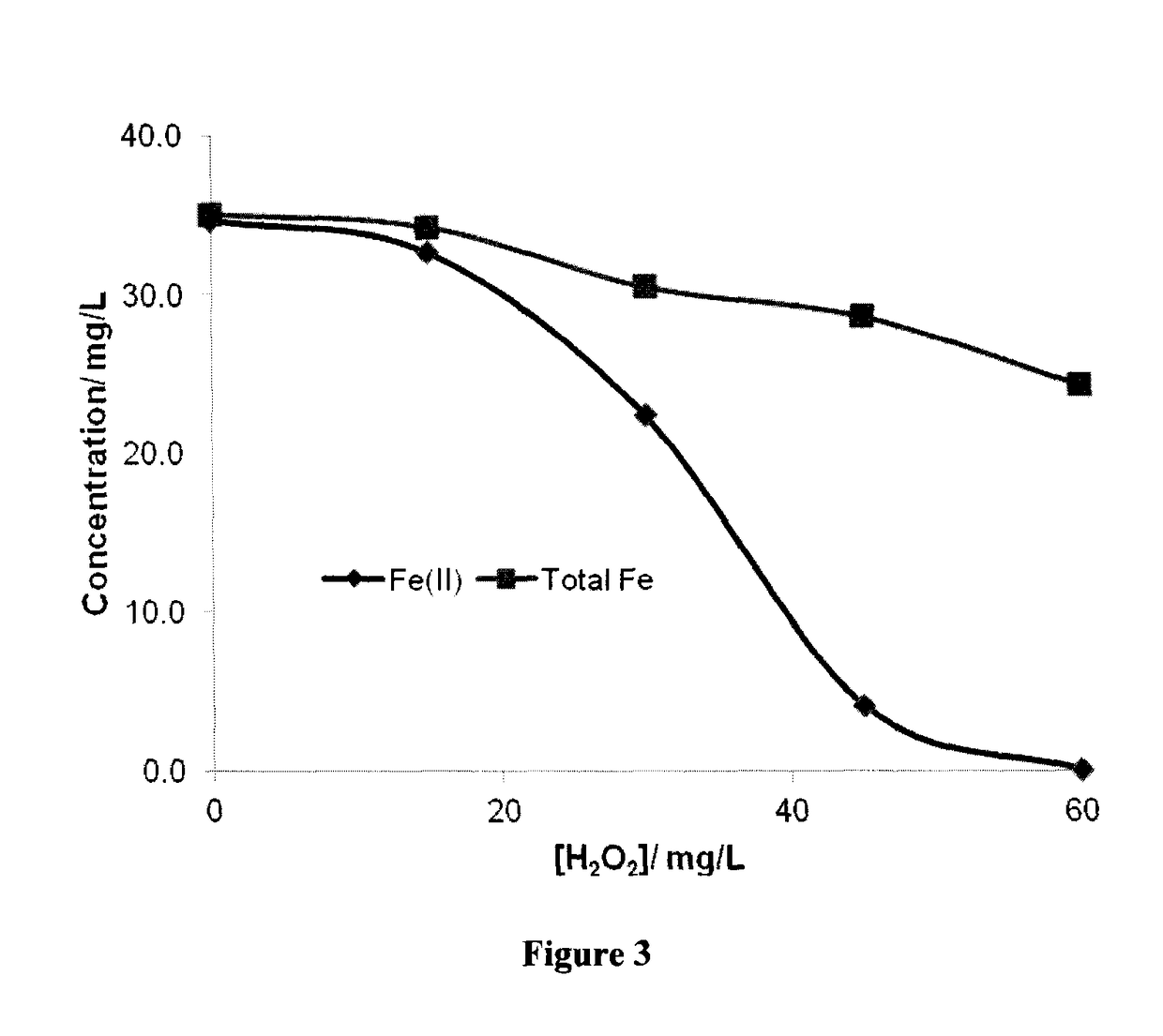Process for treatment of a fluid comprising an oxidizable containment
a technology of oxidizable containment and fluid, which is applied in the direction of water treatment compounds, water/sewage treatment by oxidation, water treatment water, etc., can solve the problems of high cost, low rate of oh-radical generation from iron(iii)-chelate catalyzed decomposition of hydrogen peroxide, and inability to meet the requirements of oxidation and other problems, to achieve the effect of increasing the rate of iron recycling and reducing the concentration
- Summary
- Abstract
- Description
- Claims
- Application Information
AI Technical Summary
Benefits of technology
Problems solved by technology
Method used
Image
Examples
example 1
[0185]This example illustrates catalytic decomposition of hydrogen peroxide in Milli-Q water
[0186]In this test approximately 100 mL of borate buffered solution (pH 8.0)-0.05 M boric acid, 0.1 M KCl—spiked with about 60 mg / L of hydrogen peroxide was added to a 250 mL Erlenmeyer flask. An initial sample was taken and 0.2 mM of Fe(III)-NTA to the solution while it was being mixed using a magnetic stirrer bar. Samples were taken at regular time intervals and analyzed for hydrogen peroxide. The same test was repeated again but the solution after taking an initial sample was spiked with about 30 mg / L of sulfide and 0.2 mM Fe(III)-NTA. Again samples were taken at regular time intervals and analyzed for hydrogen peroxide.
[0187]The test results presented in FIG. 1 show that the decay rate of hydrogen peroxide catalyzed by Fe(III)-NTA is monophasic and similar to those reported in the literature (De Laat et al., 2011); however, the decay kinetics in the presence sulfide ion becomes biphasic a...
example 2
[0188]This example illustrates oxidation of benzene in Milli-Q water. Two sets of tests were performed to demonstrate that oxidation of benzene by a preferred embodiment of the present is instantaneous.
[0189]In the first test, an Erlenmeyer flask was filled with approximately 200 mL of a solution containing about 60 mg / L of sulfide ion and 20 mg / L of benzene. An initial sample was taken followed by addition of 0.6 mM of Fe(III)-NTA, adjusted solution pH to about 7.0 and a second sample was taken. The remaining solution was then treated by stepwise addition of hydrogen peroxide. Approximately, 15 mg / L of H2O2 was added at each step and a sample was taken less than 0.5 min after peroxide addition. Hydrogen peroxide added in each step was consumed instantaneously except for the last two steps in which hydrogen peroxide were not consumed instantaneously. The samples were filtered to remove suspended solids and analyzed for benzene, phenol and Fe(II) and total iron. The results are prese...
example 3
[0199]This example illustrates oxidation of benzene and toluene with other iron-catalysts.
[0200]The data presented in this example shows that the iron catalyst employed by present process is not limited to Fe-NTA and that Fe-NTA can be replaced by other iron catalysts, such as Fe-ethylenediamine tetracateic acid (Fe-EDTA)], Fe-Diethylenetriamine pentacaetic acid (Fe-DTPA), Fe-Phosphonmethyliminodiacetic acid (PDA), Fe—[N-(2-carboxyethyl)iminodiacetic acid] (CEDA), etc.
[0201]The tests described in the previous examples were repeated employing the replacement catalysts and the test results are presented in Tables 2-5. The data presented in these tables show that all of the above substitute catalysts are as effective Fe-NTA insofar as the concentration of benzene removed appears to be independent of specific iron-catalyst used and increases with increasing concentration of the catalyst.
[0202]As described above, the present process can also be used for the oxidation of and removal of ot...
PUM
| Property | Measurement | Unit |
|---|---|---|
| temperature | aaaaa | aaaaa |
| temperature | aaaaa | aaaaa |
| temperature | aaaaa | aaaaa |
Abstract
Description
Claims
Application Information
 Login to View More
Login to View More - R&D
- Intellectual Property
- Life Sciences
- Materials
- Tech Scout
- Unparalleled Data Quality
- Higher Quality Content
- 60% Fewer Hallucinations
Browse by: Latest US Patents, China's latest patents, Technical Efficacy Thesaurus, Application Domain, Technology Topic, Popular Technical Reports.
© 2025 PatSnap. All rights reserved.Legal|Privacy policy|Modern Slavery Act Transparency Statement|Sitemap|About US| Contact US: help@patsnap.com



